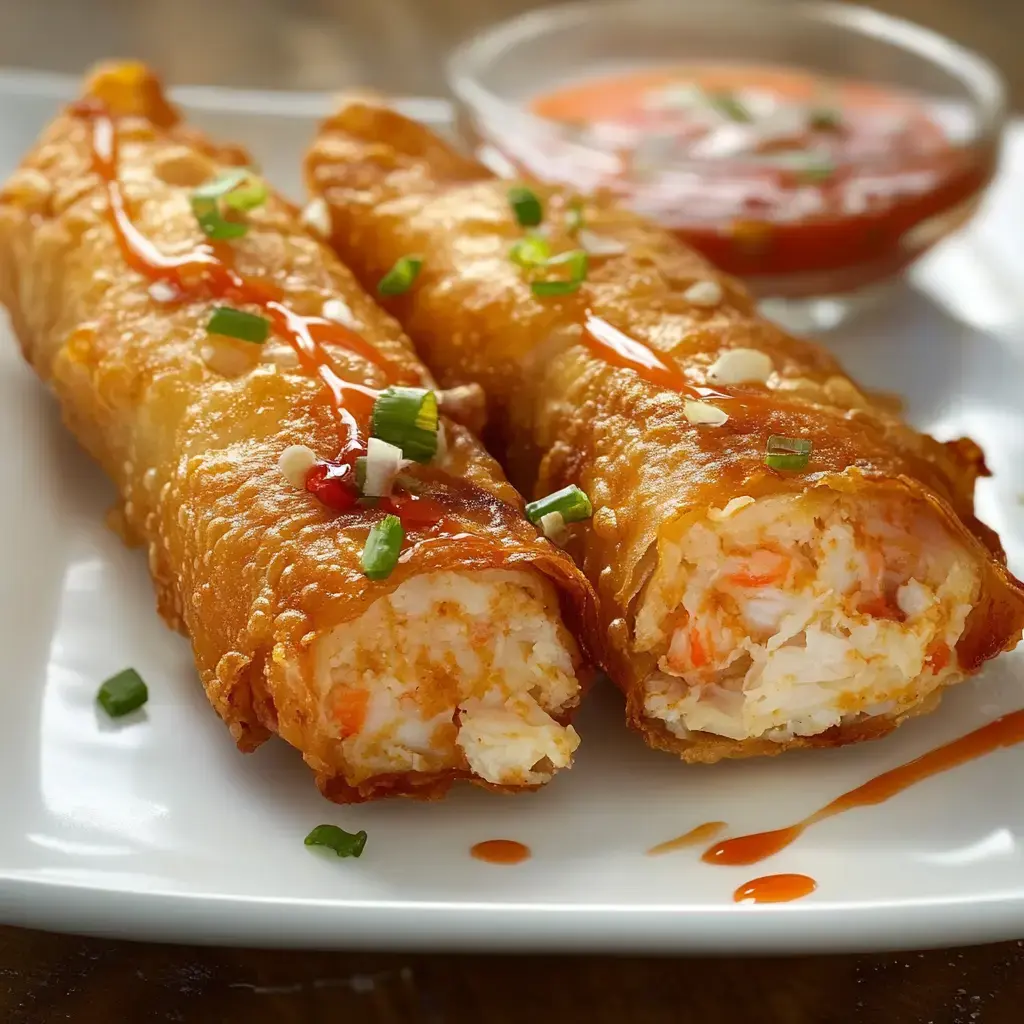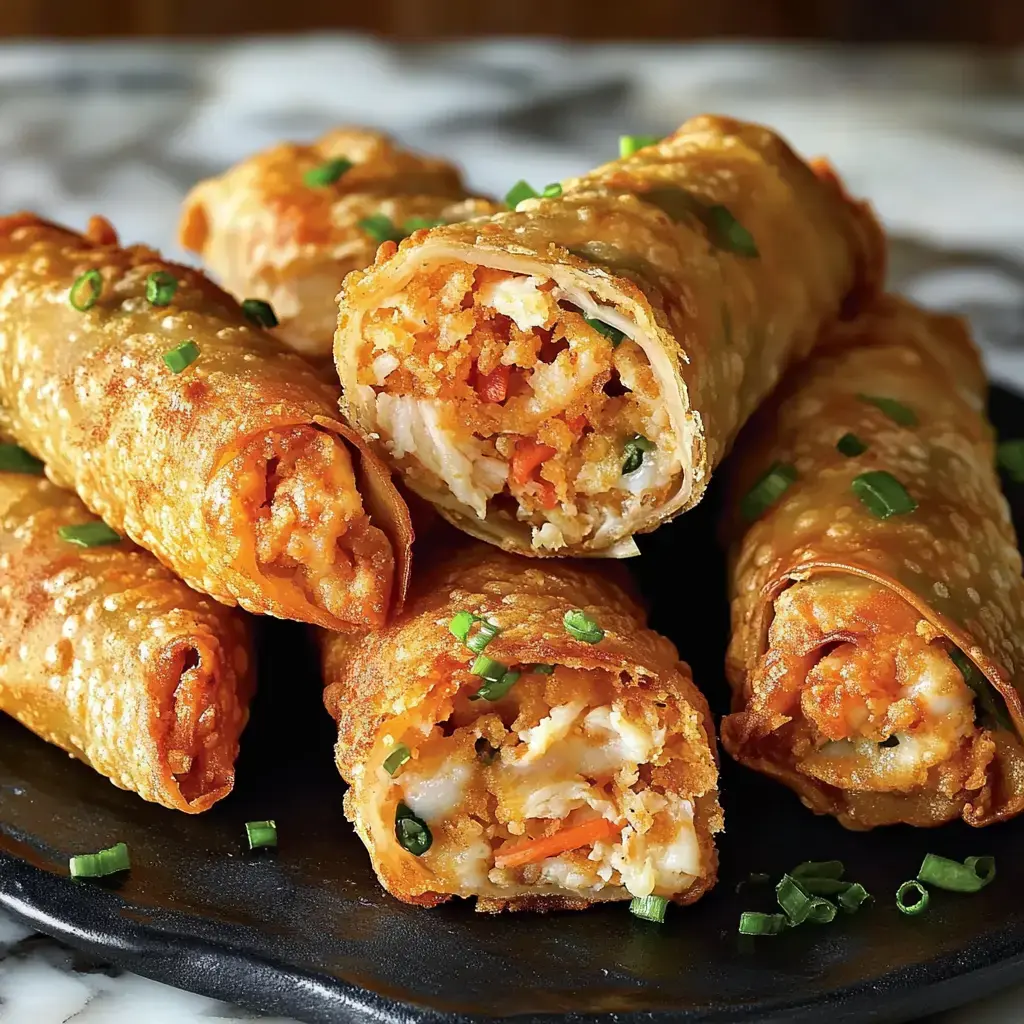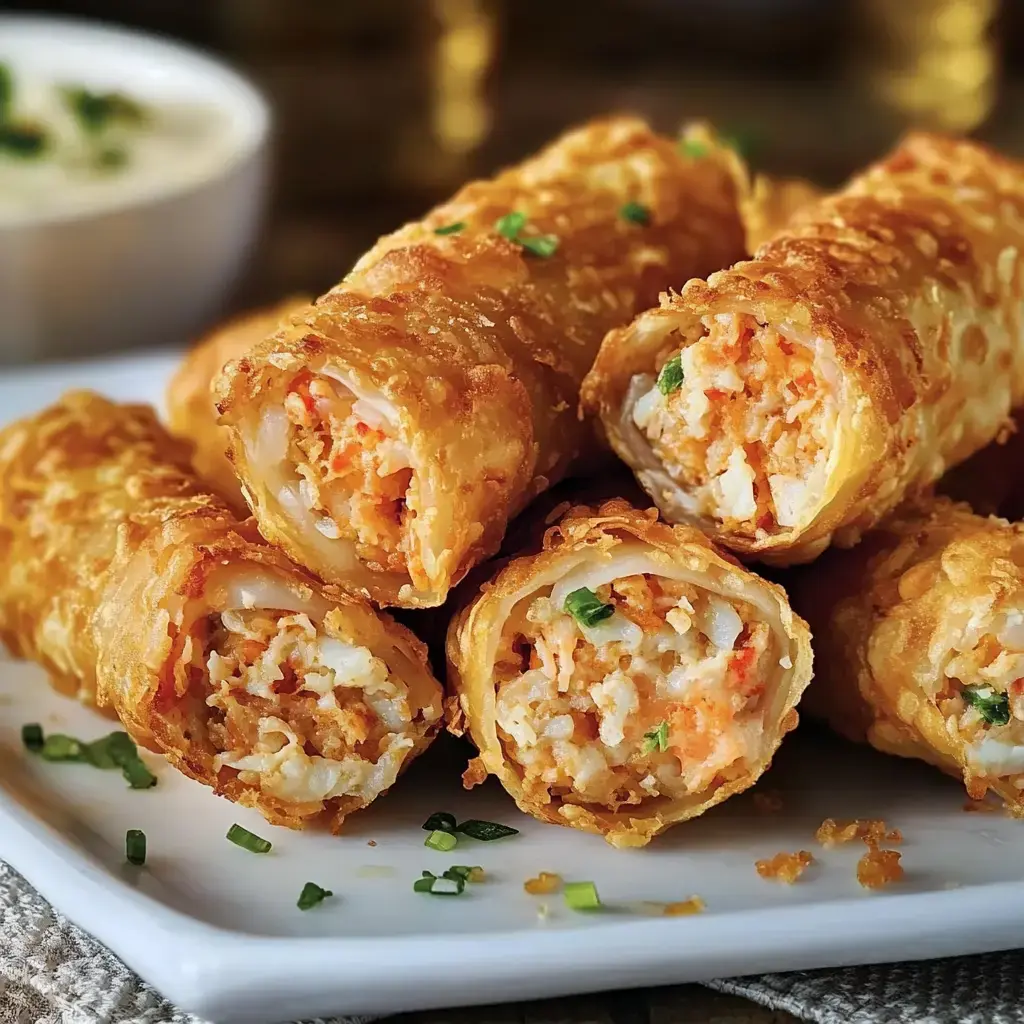 Pin it
Pin it
This sophisticated fusion creation emerged through careful development of traditional crab cake elements combined with Asian preparation techniques. Initial experimentation focused on achieving optimal balance between premium seafood and creamy components while maintaining proper wrapper integrity. Multiple iterations refined the methodology, particularly regarding filling consistency and frying techniques. The distinctive combination of Maryland-style seasonings and precise temperature control creates exceptional depth while preserving delicate crab flavors.
Why These Egg Rolls Stand Apart
These fusion bites achieve distinction through their precise balance of premium crab and sophisticated dairy elements. The careful selection of jumbo lump crab meat ensures optimal texture, while cultured dairy products provide proper binding properties. Each component serves specific purpose in flavor development - from the initial seasoning blend to the final wrapper preparation. Temperature control during preparation ensures proper filling consistency while achieving ideal wrapper crispness. The frying technique creates superior texture development while maintaining moisture content.
Essential Components
- Primary Elements:
- premium jumbo lump crab meat, carefully selected for integrity
- cultured cream cheese, properly tempered
- selected mayonnaise for proper binding
- premium sour cream for enhanced richness
- authentic Old Bay seasoning blend
- aged cheddar or premium mozzarella
- specific egg roll wrappers for optimal results
- Equipment Requirements:
- precise temperature monitoring devices
- proper frying vessel with temperature control
- calibrated measuring implements for consistency
- appropriate wrapping surface for assembly
Creation Process
- Initial Preparation
- Begin with proper temperature control of dairy elements. Combine binding agents with specific methodology ensuring proper emulsion. Incorporate seasonings systematically for even distribution.
- Seafood Integration
- Fold crab meat with gentle technique preserving meat integrity. Monitor moisture content throughout incorporation process.
- Assembly Technique
- Position filling with precise measurement ensuring proper distribution. Execute wrapping methodology maintaining structural integrity. Apply proper sealing technique preventing separation during cooking.
- Cooking Process
- Maintain precise oil temperature throughout frying process. Monitor color development ensuring proper crispness. Execute proper draining technique preserving texture.
 Pin it
Pin it
Technical Insights
Temperature control proves essential throughout preparation process. Understanding proper binding ratios significantly impacts filling stability. Wrapper handling technique requires careful attention to prevent tearing. Monitoring oil temperature during frying ensures proper results. Each component requires specific consideration to maintain proper balance while ensuring optimal texture development. Timing sequence creates significant impact on final presentation. Storage methodology between preparation steps significantly affects quality.
Variations and Adaptations
This foundational recipe accepts numerous sophisticated adaptations while maintaining core methodology. Various seafood combinations create intriguing flavor profiles. Alternative cheese selections allow for fascinating taste variations. Different seasoning components provide opportunities for regional interpretation. Each adaptation requires specific adjustments to maintain proper consistency and flavor integrity. Cooking method variations offer diverse texture development possibilities.
 Pin it
Pin it
Service Considerations
Professional presentation elevates this preparation to sophisticated status. Temperature consideration during service impacts texture significantly. Understanding proper sauce pairing enhances guest experience. Strategic garnish placement maximizes visual impact. Creating balanced accompaniments maintains professional appearance while ensuring proper meal composition. Storage protocols between service periods significantly impact quality maintenance.
Frequently Asked Questions
- → Why freeze before frying?
Freezing helps the filling set and prevents leaking during frying. It also makes the rolls easier to handle and ensures even cooking.
- → What temperature oil is best?
Keep oil at 300°F. Higher temperatures brown outside too quickly before inside heats through. Lower temperatures make rolls greasy.
- → Can I use imitation crab?
Real lump crab meat gives best flavor and texture. While imitation crab works, it won't have the same rich, authentic taste.
- → Why cover unused wrappers?
Egg roll wrappers dry out quickly and become brittle. Keep covered with damp towel to maintain pliability while working.
- → Can I bake instead of fry?
While frying gives best crispiness, you can brush with oil and bake at 400°F for 15-20 minutes, turning halfway through.
Conclusion
Golden fried egg rolls filled with creamy lump crab and cheese mixture, served with a kicked-up Old Bay Sriracha aioli. A fusion twist on two favorites.
